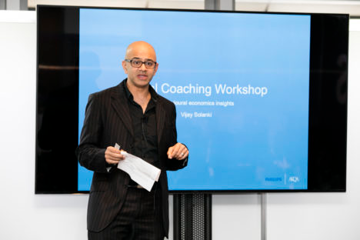Holding together the big tent: The many challenges facing the IAB’s new CEO
After months of searching the IAB has appointed a new CEO in Vijay Solanki. Mumbrella looks at what the appointment means for a key digital industry body burdened currently with a lengthy list of technical, policy and political challenges.
For many in the digital media landscape the appointment of Vijay Solanki will come as something of a surprise.
The former Southern Cross Austereo chief digital officer has only been in Australia for a little over a year but already finds himself leading a key industry body facing a number of daunting technical challenges such as viewability, ad fraud, key measurement issues related to mobile and implementation of the Nielsen daily ratings, as well as broader political issues as to how the IAB engages with other industry bodies.
Solanki is keeping a low profile until he begins the role until August but IAB chairman Ed Harrison said his digital background should give him a running start.


